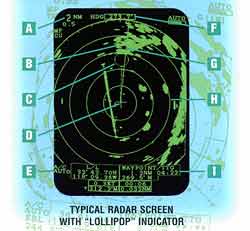Understanding Your Radar
Understanding Your Radar
Radar, The “Mandatory” Option.
With all of the advances made in small boat radars, it has gradually become a “mandatory” option when outfitting a new boat. Affordable prices and user-friendly systems have also caused owners looking to re-outfit their “experienced” hulls to consider adding radar to their electronics arsenal. The biggest challenge facing many first-time radar users is to select the appropriate unit for their particular application from a long list of options that includes CRT or LCD screens, monochrome or color format, supported by either an enclosed radome or open array antenna.
The LCD Revolution.
The introduction of high-resolution, small footprint LCD screens has enabled many pleasure boat operators to experience the benefits of radar previously enjoyed by only larger boats. LCD Radars, like the Furuno 1621MK2 and the M800 series, offer pleasure boat operators the best combination of features that will not only hold up to the elements with a totally waterproof case and keyboard, but also offer a backlit, high-resolution LCD screen that is easy to see in almost any ambient lighting condition.
For those boaters who have more room at the helm and a dedicated area to mount their electronics arsenal out of the weather, Furuno’s M1701 CRT radar series offers the sharp, crisp depth and detail that only a high-definition monochrome screen can produce. Although historically, boaters were only offered a monochrome format when choosing a radar screen, all that has changed with Furuno’s exciting new FRS1000 series of four-in-one integrated navigation systems, which produce vivid pictures, on a bright 10.4″ TFT LCD color screen.
Choose Your Antenna.
Most Furuno radars offer a variety of antenna choices. The enclosed radome type is very popular with both sailors and anglers, since it keeps all moving parts away from outrigger halyards, working lines, rigging and anything else that might work its way near the antenna. In addition, the fiberglass dome keeps moisture and salt out and away from critical components. The open array antenna typically is larger than the radome types and requires mounting on top of a larger vessel with a flybridge or tower, but offers increased range and enhanced target detail in return.
The bottom line is that no matter what type of Radar you need, Furuno has an affordable unit that will enhance the safety for all those aboard
Typical Radar Screen with “Lollipop” Indicator
A Range of radar display
B Land Mass
C “Lollipop” indication of selected waypoint
D Position of boat in a head-up display
E Auto anti-clutter is activated
F Heading of boat
G Heading line shows direction of boats path
H Selectable fixed range rings
I Waypoint bearing
